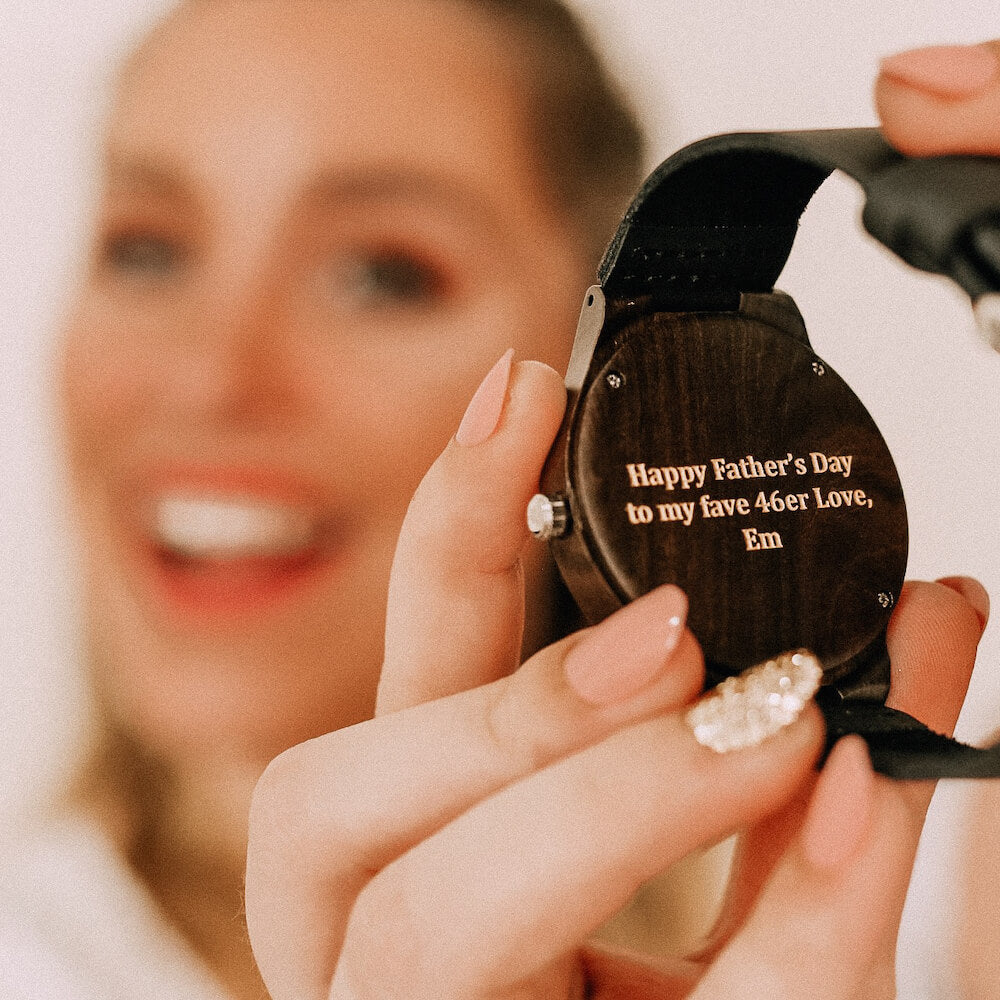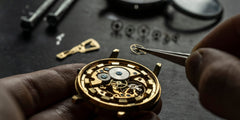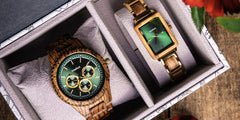When comparing wooden watches vs. metal watches, your decision signals more than style – it reflects values and priorities. Are you seeking a timepiece tied to nature, craftsmanship, and story? Koa wood offers that tactile connection, rooted in Hawaiian forests and artisan care. Meanwhile, metal watch fans appreciate its polished elegance and dependability. This blog explores the style, comfort, care, and craftsmanship that set koa wood watches apart from metal ones.
Read More: Wooden vs. Metal Sunglasses: Which One Should You Choose?
Visual Character & Beauty
Warm, Lived-In Sophistication – Koa Wood Watches
Koa wood displays rich amber and golden-brown tones that shift as light moves. Each watch reveals unique grain, evoking landscapes and weathered textures. Dark streaks and swirling lines catch the eye and spark conversation. This dynamic coloring means the watch never looks static – it grows deeper with wear. Over time, koa develops a mellow patina that tells a personal story.
Sleek, Uniform Precision – Metal Watches
Metal watches focus on sharp finish and refined geometry. Mirrored surfaces, brushed edges, and crisp profiles signal formality and precision. What you see today is what you’ll see years later. That design consistency works beautifully in office or formal settings. Still, metal’s unwavering exactness lacks the shifting subtleties of natural wood.
Koa Wood vs. Metal Watches: All-Day Comfort & Wear

Featherlight Warmth – Koa Wood
Koa wood feels nearly weightless the moment you strap it on. There’s no initial chill – instead, it warms softly to skin temperature. Subtle micro-porosity allows airflow, preventing sweat buildup. Wooden links glide smoothly without pressure points. Over extended wear, the watch adapts to your wrist shape, becoming a seamless companion. In debates over wooden watches vs. metal watches, comfort often swings the vote.
Firm, Functional Structure – Metal
Metal bracelets bring satisfying solidity and audible clasps. They feel sturdy and confident. However, that firmness can feel restrictive after hours. Metal takes time to warm up in heat and may cool rapidly in cold. Lack of airflow can lead to moisture buildup during physical activity. Despite its bulk, metal stays securely in place, which some wearers prefer.
Ethical Crafting & Environmental Footprint
Respectful Renewal – Koa Wood Watches
Treehut sources koa wood responsibly, honoring the tree’s natural lifecycle. Each piece gets handcrafted in California, preserving its organic features. Craftspeople polish with plant-based oils, enhancing texture without hiding it. This approach creates a direct link from forest to wrist. Wood, being renewable, lends itself to thoughtful harvesting and circular reuse. When you weigh wooden watches vs. metal watches, koa represents intentional stewardship.
Intensive Industrial Production – Metal Watches
Metal starts with mining, involves smelting, high-heat forging, and often outsourced machining. Even recyclable metals inherit a heavy carbon and chemical subsidy. Parts may ship globally before assembly, and aesthetic customization often happens in bulk, not hand-finished. While metal can repair or recycle, its origin story doesn’t speak of place or eco-conscious craft.
Koa Wood Watches vs. Metal Watches: Long-Term Care & Aging
Patina That Speaks – Koa Wood
Koa resists everyday moisture thanks to natural oils. It collects a soft sheen and character marks over time – from handshakes, adventures, and everyday motion. Minor scratches smooth with fine sandpaper and a dab of conditioner. This aging process feels organic, mirroring life's journeys rather than erasing them. In the contrast of wooden watches vs. metal watches, wood evolves with you.
Durable Yet Demanding – Metal
Metal excels at resisting external damage, but clean appearance takes effort. A quick clean keeps it shiny, but polish may require professional help. Deep scratches or corrosion need thicker intervention. Even quality plating can wear away under harsh treatment. Durable as it may be, metal shows wear in sharply defined lines – unmistakable and resolute.
Personalized Fit & Flexibility

Molded to You – Koa Wood Watches
Wooden links allow smooth resizing without visible gaps. A jeweler can remove or add links discreetly. The band flexes around the wrist, adapting to its shape day by day. There’s no pinching, no stiffness. Adjustments feel intuitive, following the body’s natural shape. That blend of structure and yielding grace gives wood a clear edge when comparing wooden watches vs. metal watches.
Solid Precision – Metal Watches
Metal bands often include tiny micro-adjustment holes and strong clasps. They lock tight for firm security but can feel bulky next to soft skin. Adjustments usually require tools. While they maintain form well, they lack adaptability. Metal’s rigidity suits wearers who prefer a stable, unchanging fit.
Koa Wood vs. Metal Watches: Versatility
Understated Everyday Warmth – Koa Wood
Koa wood transitions effortlessly between hikes and meetings. It pairs naturally with denim, linen, or a crisp button-down. As seasons change, its tones complement fall browns and summer greens alike. It feels at home at a campfire or a café. Through daily life, it molds into your aesthetic quietly yet memorably.
Sharp, Refined Statement – Metal
Metal watches maintain their formal presence with polished surfaces and metallic sheen. They work well with ready-to-wear suits or minimalist styles. However, they may clash with textured or casual materials like flannel or canvas. The shine they carry may feel out of place in more relaxed surroundings. When evaluating wooden watches vs. metal watches, versatility often positions wood ahead.
Read More: Metal vs. Wood Bracelets for Men: Which Is Better?
Why Koa Wood Wins You Over
Ultimately, the choice between wooden watches vs. metal watches often comes down to warmth, adaptability, and story. Koa wood delivers all three. Each watch is a unique artifact – no two share the same grain pattern, tonal shift, or aging process. Treehut’s dedication to local craftsmanship and sustainable material deepens that story. Every watch begins in fallen Hawaiian forests, then transforms in our San Francisco studio. The result is an accessory rooted in place and purpose.
Engraving on wood also lets you inscribe personal messages – names, dates, or sentiments – that feel integrated into the living material. The watch goes from function to heirloom, from product to part of your narrative. Choosing koa wood means celebrating texture, acknowledging growth, and carrying a keepsake that evolves with you. Unlike metal, which stays unchanged, koa responds to light, touch, and time.
In this conversation about wooden watches vs. metal watches, koa wood stands as a living testament to craftsmanship, sustainability, and personal resonance.



























